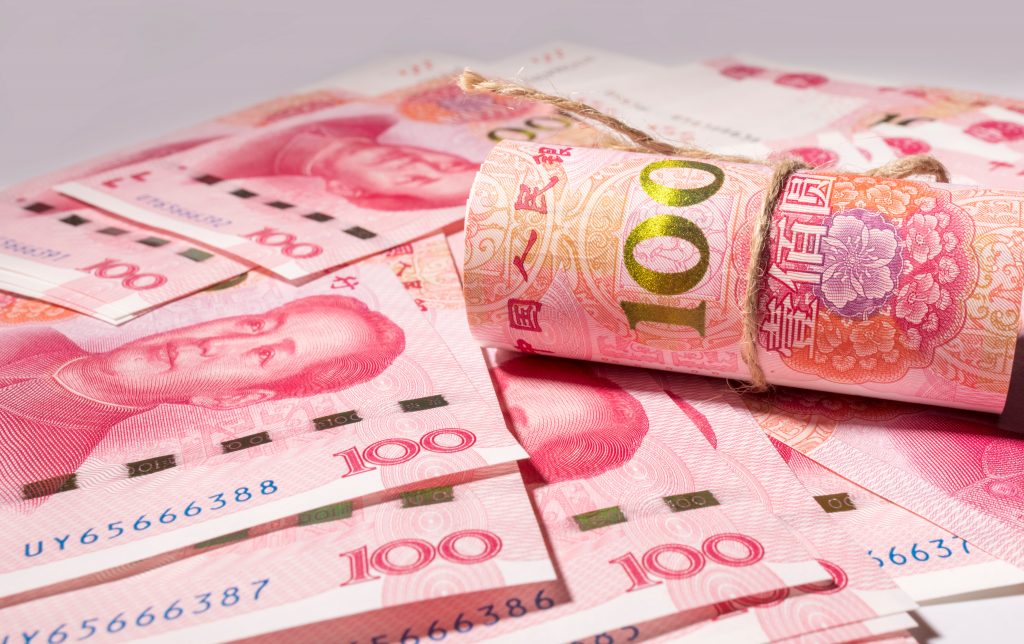U.S. Dollar Surges to Multiyear Highs Against Yen and Euro
Dollar strength from 2021 has carried over into the new trading year, with the greenback recently marking multiyear highs against other major currencies, such as the Euro and the Japanese Yen.

Don’t look now, but the U.S. dollar has quietly strengthened in 2022 and recently set multiyear highs against some of the world’s other heavyweight fiat currencies.
As of mid-April, the U.S. dollar was trading at a 20-year high against the Japanese yen and a 5-year high against the euro. The current USD/JPY exchange rate is 129.78, while the current EUR/USD exchange rate is 1.05.
Looking back at history, 129 represents a bit of an extreme in the USD/JPY exchange rate, which has ranged between roughly 80 and 130 during the last 20 years. The same can be said for the EUR/USD exchange rate, which has ranged between roughly $1.05 and $1.24.
As most are aware, the value of a given currency is typically quoted relative to another currency, or relative to a basket of currencies. For the most complete perspective on a given currency’s performance, it’s helpful to look at both.
The U.S. Dollar Index (DX-Y.NYB)—also known as the “DXY”—is one of the most-followed gauges of the dollar’s ongoing value.
The DXY measures the value of the U.S. dollar relative to a group of currencies that essentially constitute the country’s closest trading partners—the euro, Japanese yen, British pound, Canadian dollar, Swedish krona and Swiss franc.
The dollar started rallying against the aforementioned basket of currencies in 2021 and has extended that run in 2022.
Source: Reuters
What’s even more impressive in 2022 is that the U.S. dollar has also started to rally against the Chinese renminbi (Chinese yuan).
Since the onset of the COVID-19 pandemic, the dollar had been steadily depreciating against the renminbi, dropping back toward the lower end of their historical range. And last year, when the dollar started rallying against most of the world’s other major currencies, the dollar (somewhat perplexingly) continued to lose ground against the renminbi.
However, in 2022, dollar strength has finally spilled over into the Dollar/Yuan exchange rate, which is typically expressed in the foreign currency markets as “USD/CNY.”
Prior to the pandemic, the USD/CNY exchange rate was about 7—meaning one U.S. dollar could be exchanged for roughly 7 RMB. But during 2020 and 2021, the USD/CNY exchange rate dropped down to 6.30.
That trend reversed hard at the end of February 2022, with the dollar clawing its way back to 6.60 in the last eight weeks.
Exchange rates are typically quoted using the format “ABC/DEF,” and are interpreted to mean that the first currency listed is a single unit, while the exchange rate itself represents the amount of the second currency that is required to purchase a single unit of the first currency.
An exchange rate reports how much it costs to exchange one currency for another. For example, the current USD/CNY exchange rate is approximately 6.60, which means it takes roughly 6.60 yuan to purchase a single dollar.
Why the Greenback is Rallying
Recent strength in the dollar appears to be attributable to two different narratives.
First and foremost, the dollar has benefited from an increasingly hawkish U.S. Federal Reserve. With leaders at the Fed set on normalizing (i.e. raising) benchmark interest rates, associated yields on bonds in the U.S. have also risen—and in the process, attracted inflows of capital from abroad.
Like most things in the financial markets, currency valuations often tie back to supply and demand, and rising yields in the U.S. have driven increased demand for the dollar. The U.S. sticks out in 2022 because it is one of the few countries that’s aggressively raising interest rates—with the ultimate intent of clamping down on inflation.
Other regions of the world—such as the European Union, Japan, and the United Kingdom—are also stepping back assistance to their respective economies, but less aggressively than the United States. That’s one reason that global capital has zeroed in on the U.S. as the place to park money.
Newfound strength in the dollar against the Chinese renminbi also ties back to the Fed’s drive to raise rates, but another factor playing an important role in that particular exchange rate is the current wave of COVID-19 in China.
Prior to 2022, China had been much lauded by the international community for its “zero tolerance” approach to the pandemic, which (by some accounts) had helped China suppress the impact of the virus on its population, medical system and underlying economy.
But the situation in China has changed in 2022—likely due to the spread of the highly contagious omicron variant within borders of the Middle Kingdom.
Due to strong adherence to the zero-tolerance approach, many regions in China have been shut down for long periods of time during 2022. That’s been a big negative for the Chinese economy, as many factories in the country have also been impacted by shutdowns.
As a result of the current COVID-19 situation, China’s central bank is moving in the opposite direction as the Federal Reserve—embracing a more dovish and accommodative approach. To wit, the Chinese government cut interest rates in January and has announced other accommodative measures since that time.
While those efforts might ultimately help the Chinese economy get back on more stable footing, they aren’t necessarily constructive for the Chinese currency. As referenced previously, the U.S. dollar has gained significant ground against the yuan since the end of February.
To learn more about recent developments in the foreign currency markets, readers are encouraged to review a new installment of Splash Into Futures on the tastytrade financial network.
For more background on trading foreign currencies, readers can also utilize the library of resources available at ig.com/us.
For updates on everything moving the markets, readers can tune into TASTYTRADE LIVE, weekdays from 7 a.m. to 4 p.m. CDT.
Sage Anderson is a pseudonym. He’s an experienced trader of equity derivatives and has managed volatility-based portfolios as a former prop trading firm employee. He’s not an employee of Luckbox, tastytrade or any affiliated companies. Readers can direct questions about this blog or other trading-related subjects, to support@luckboxmagazine.com.



















